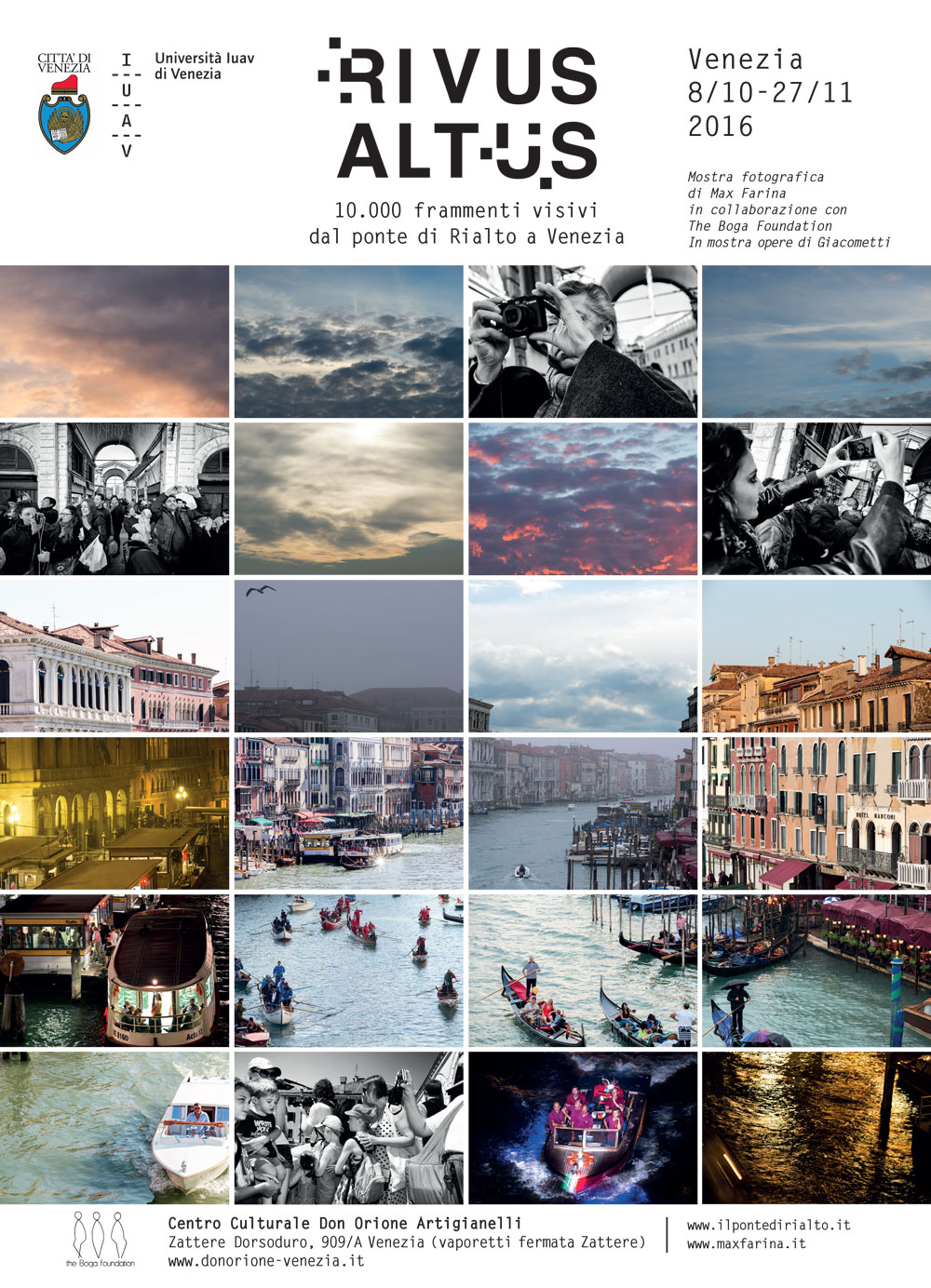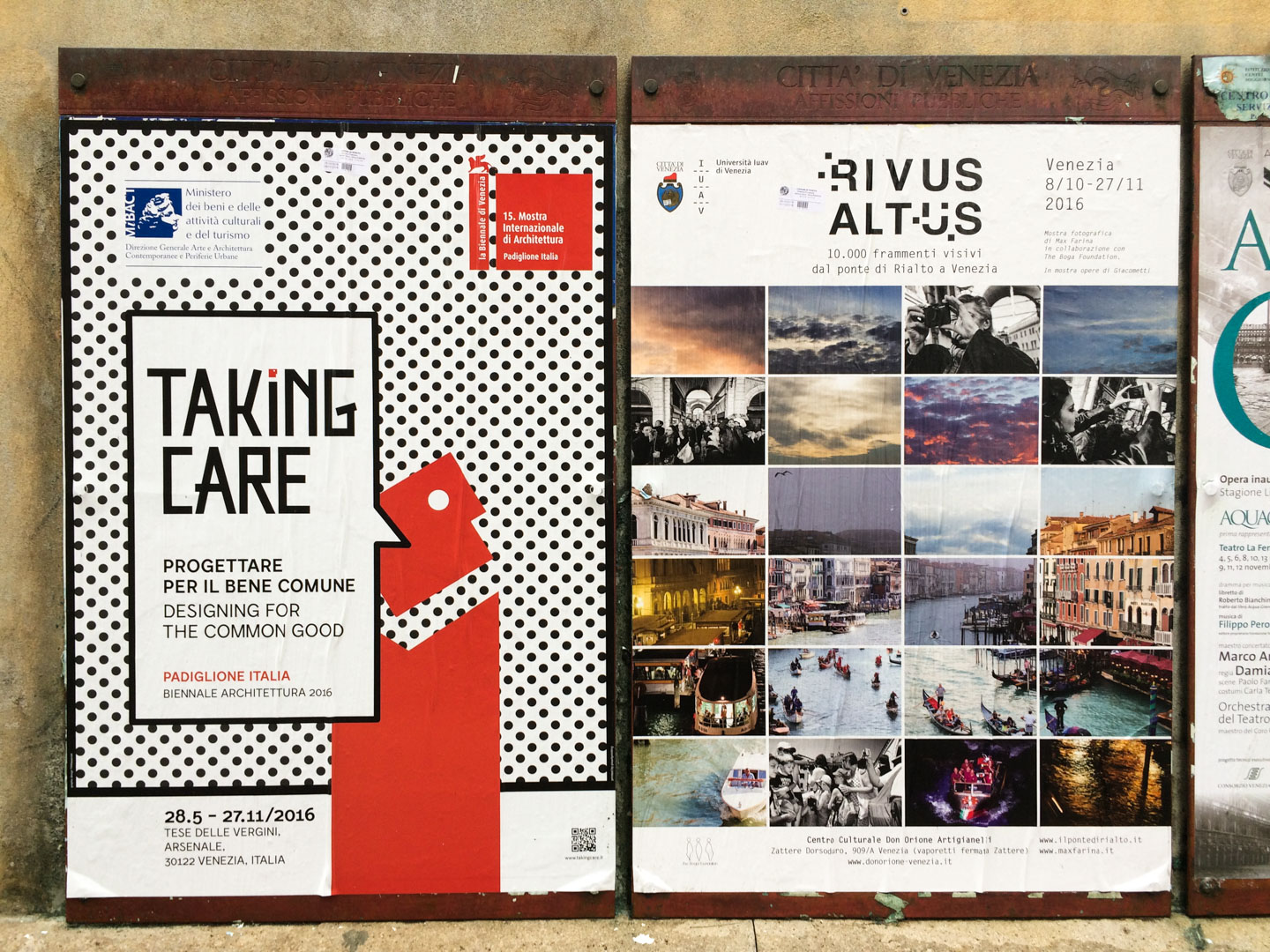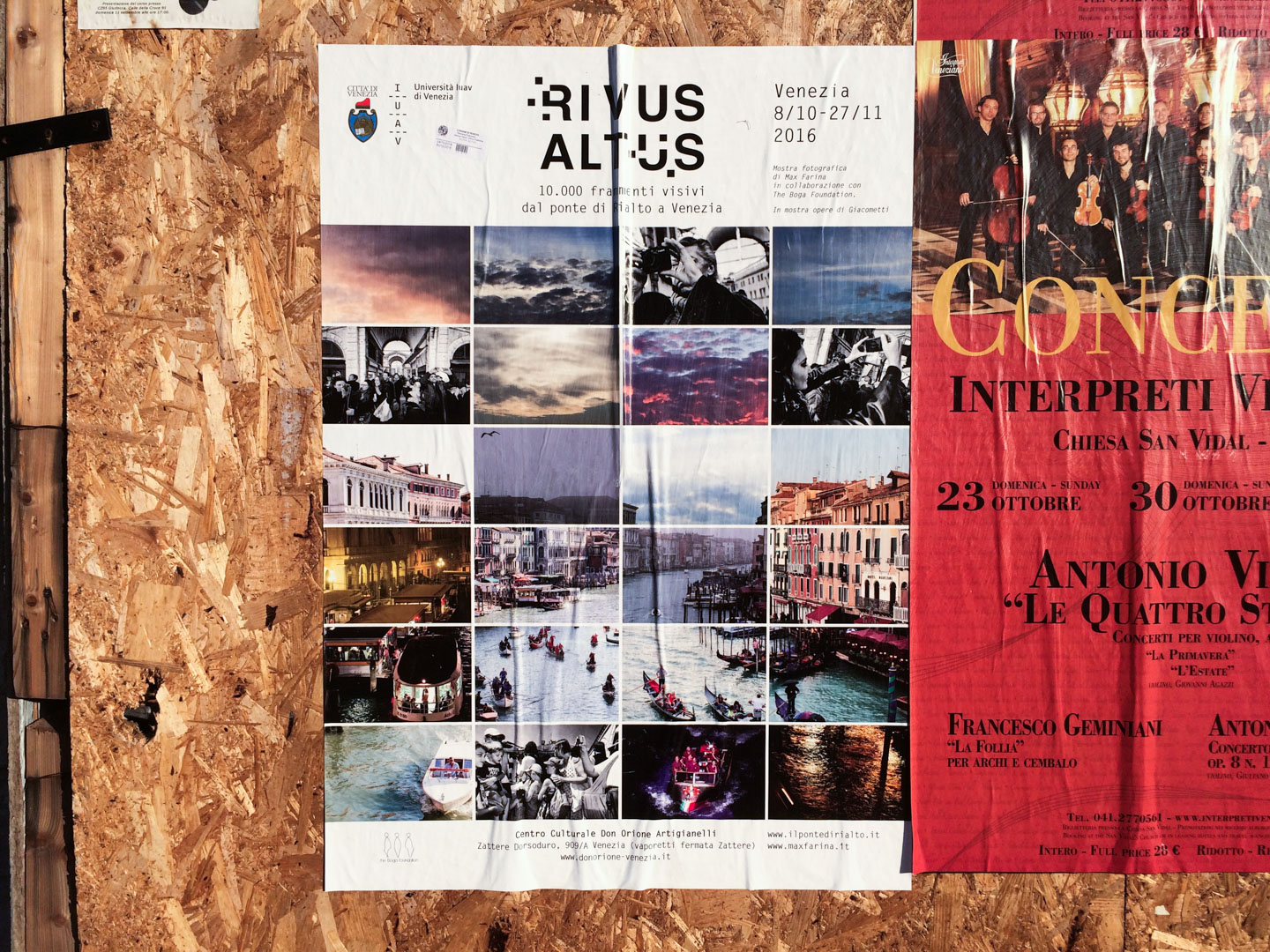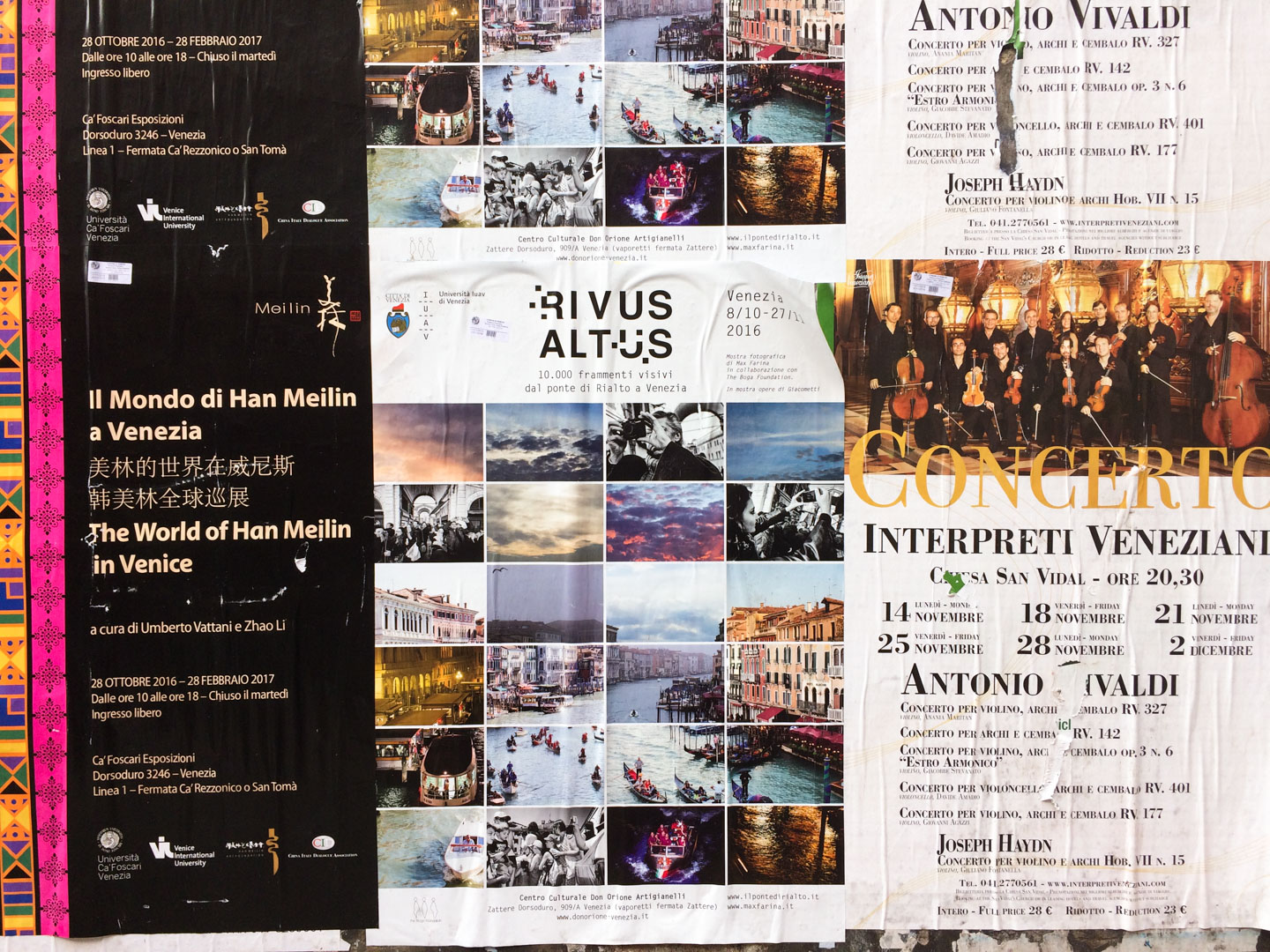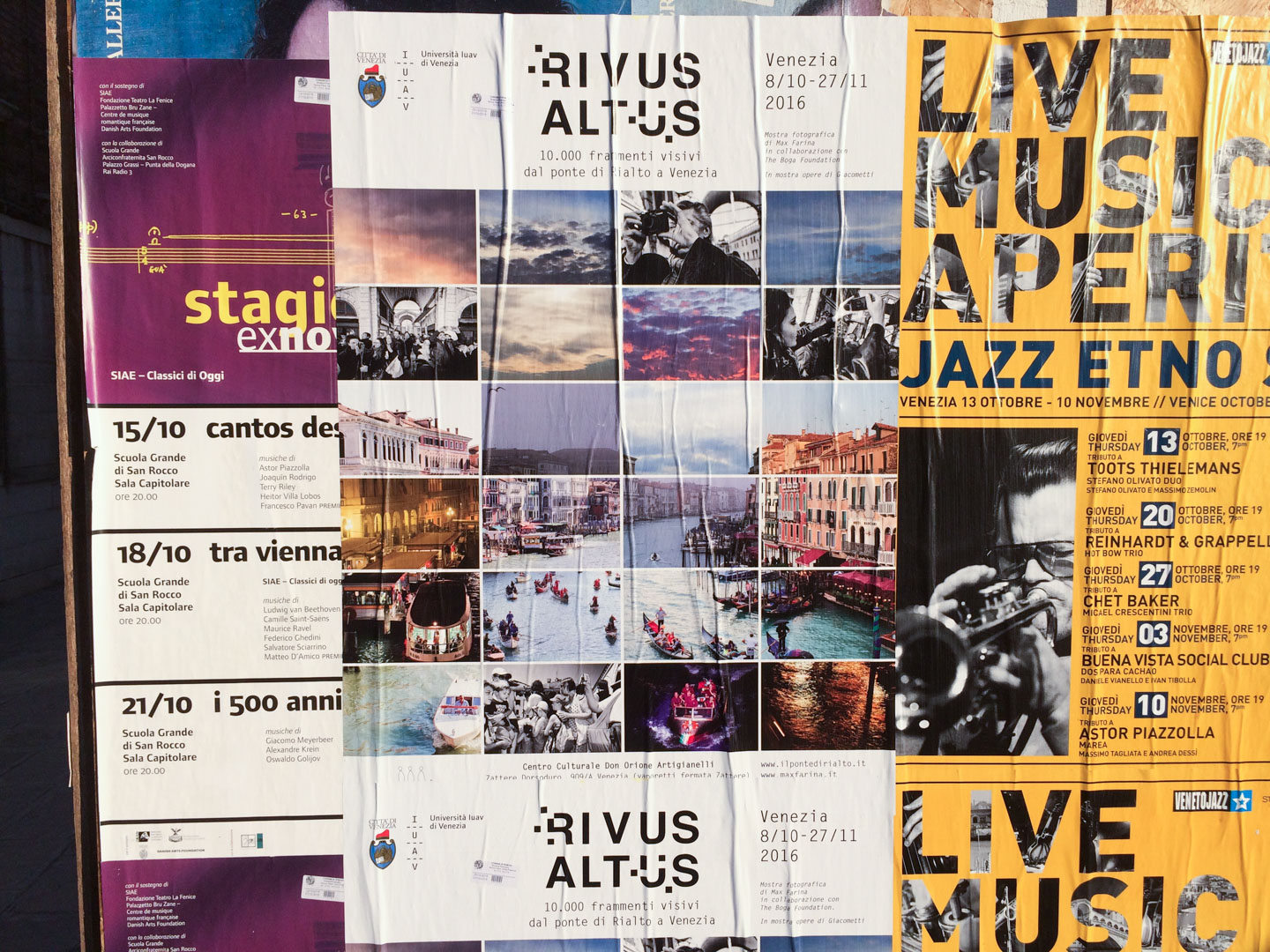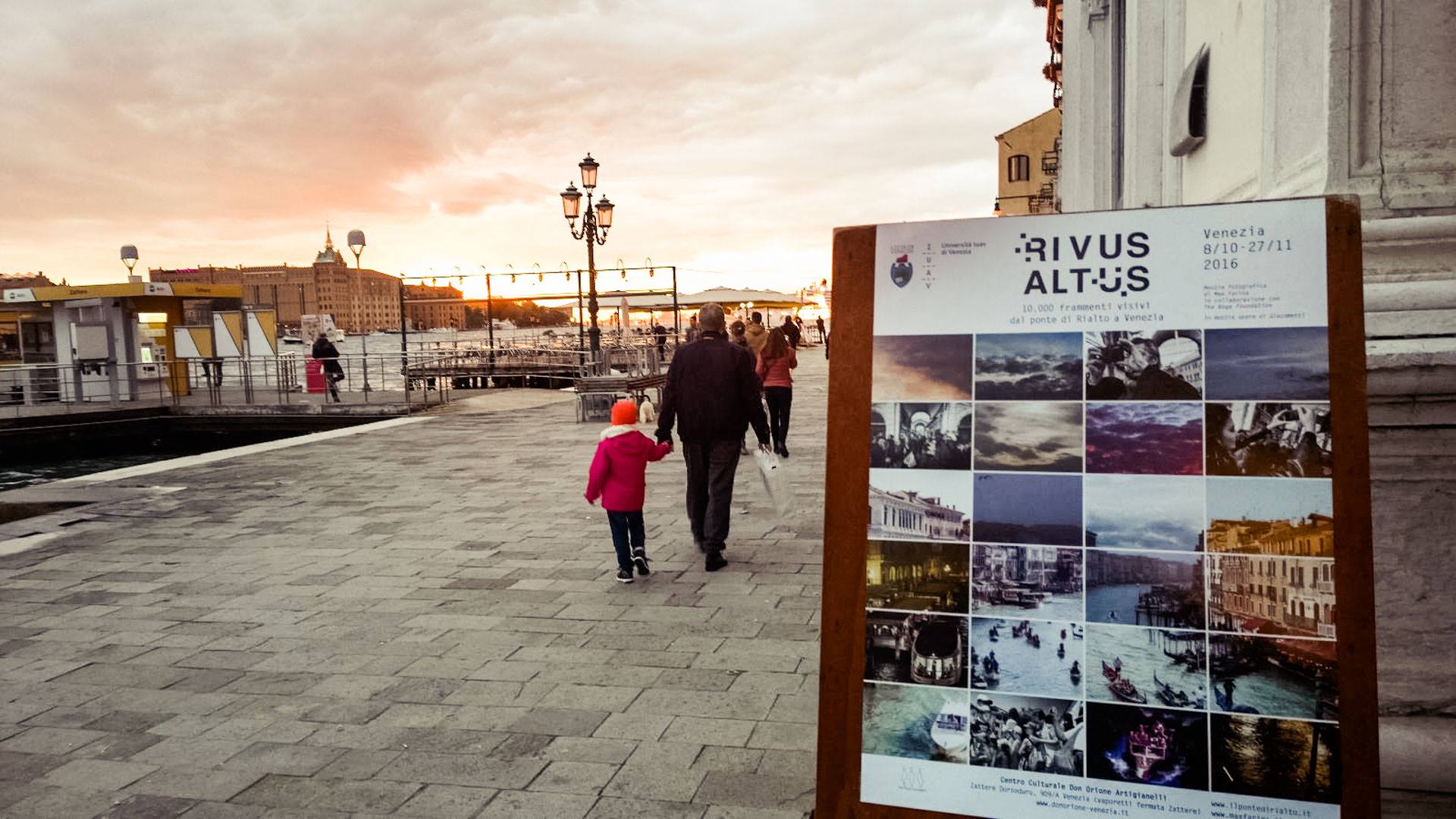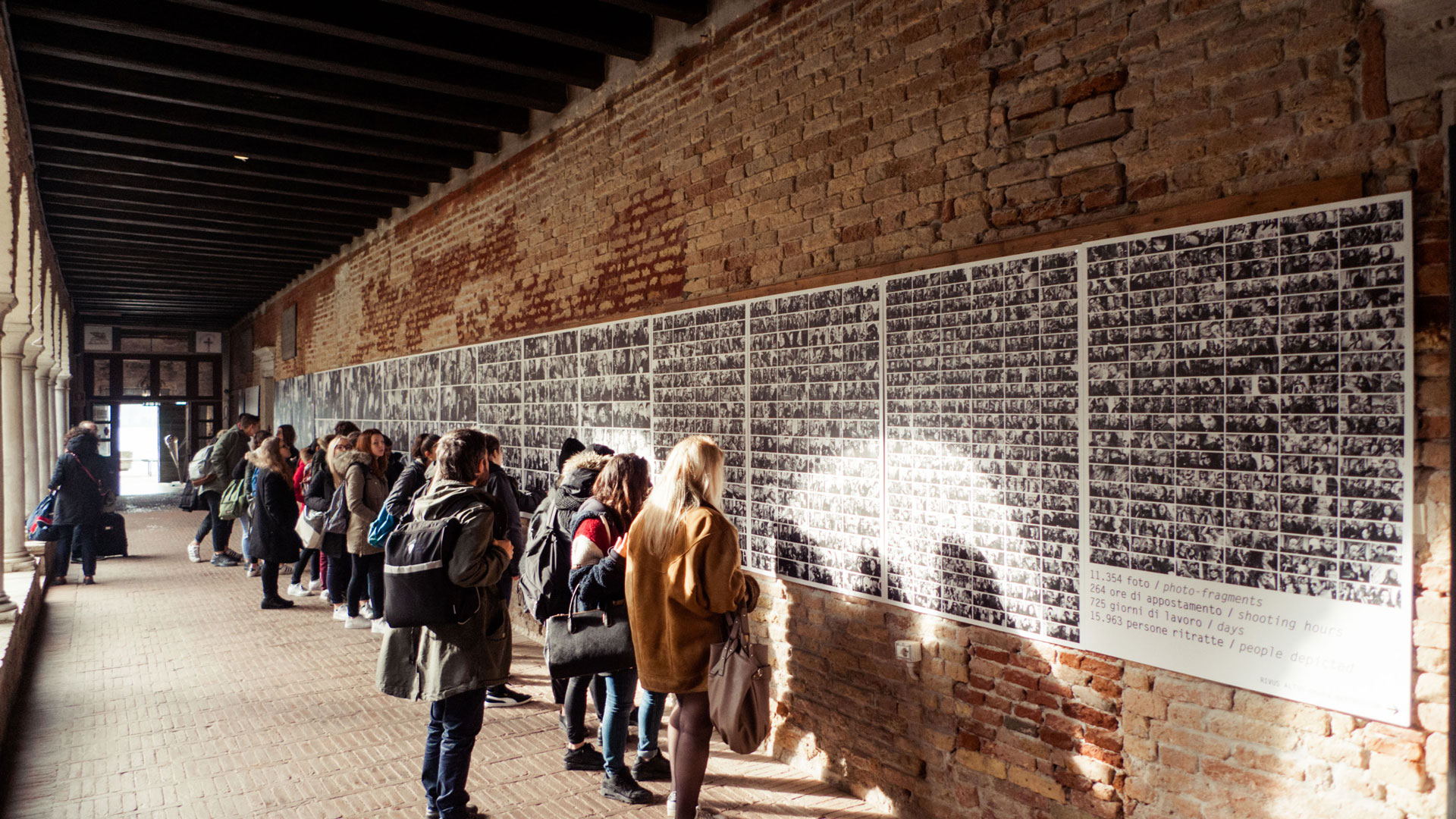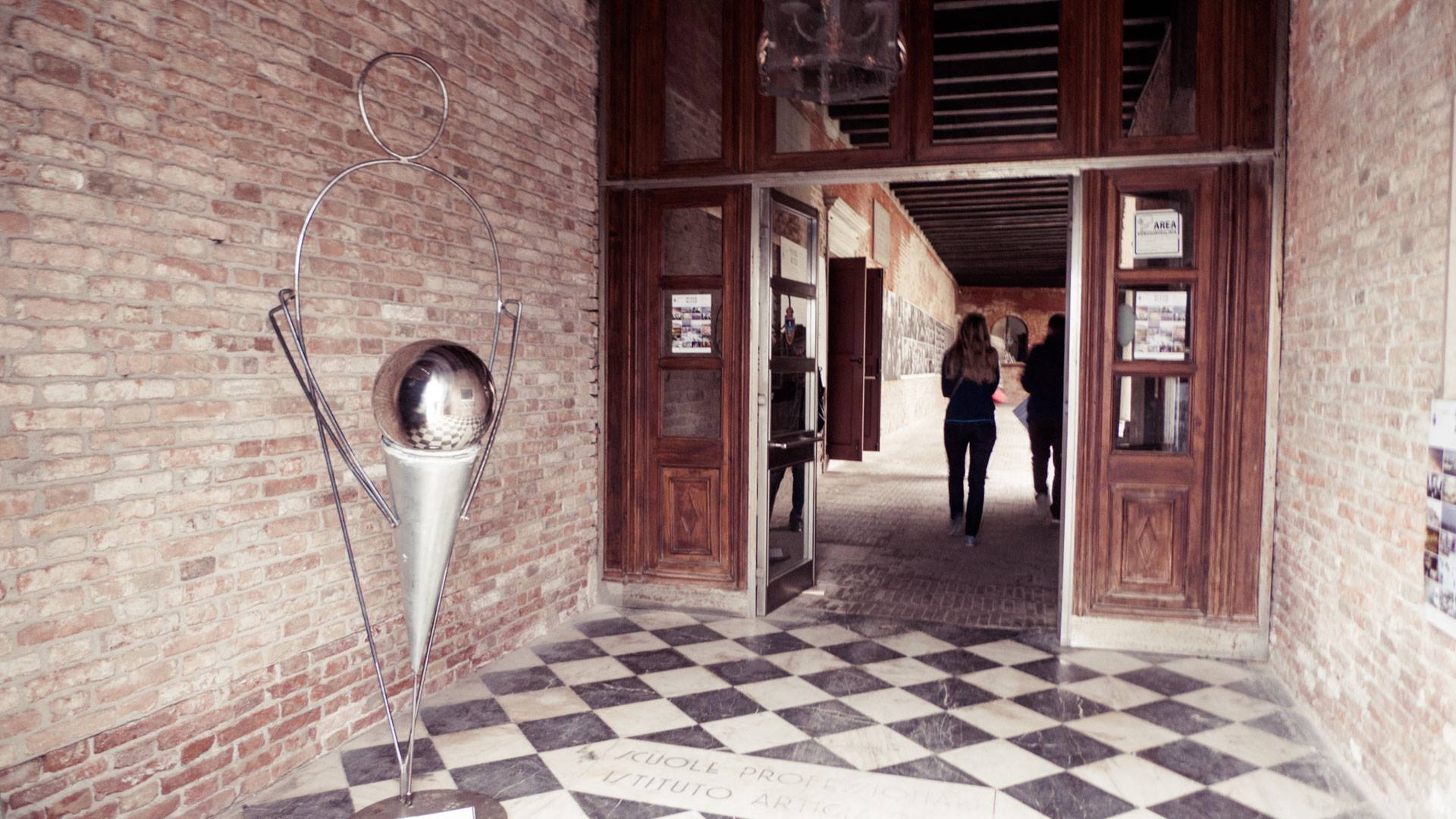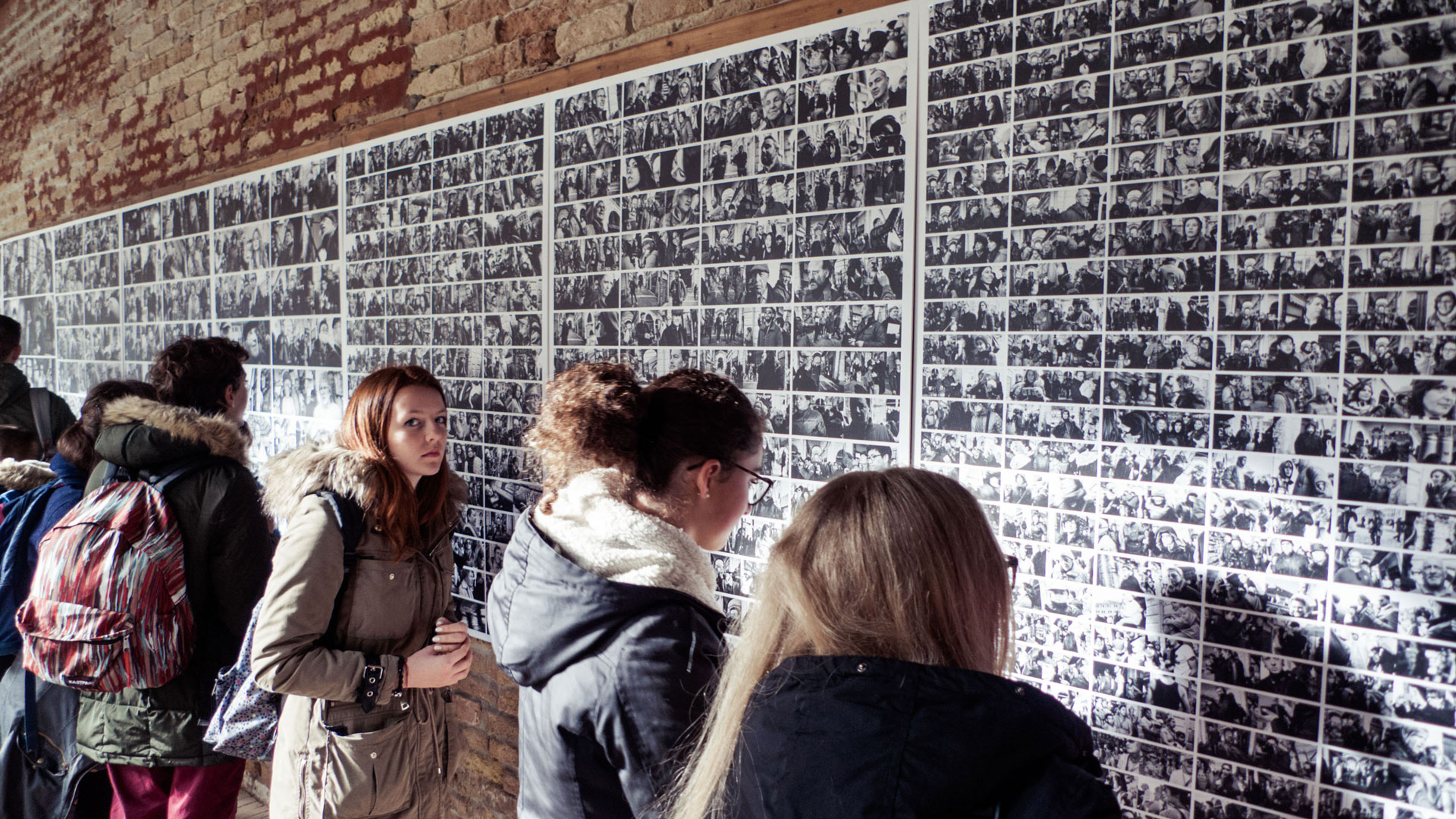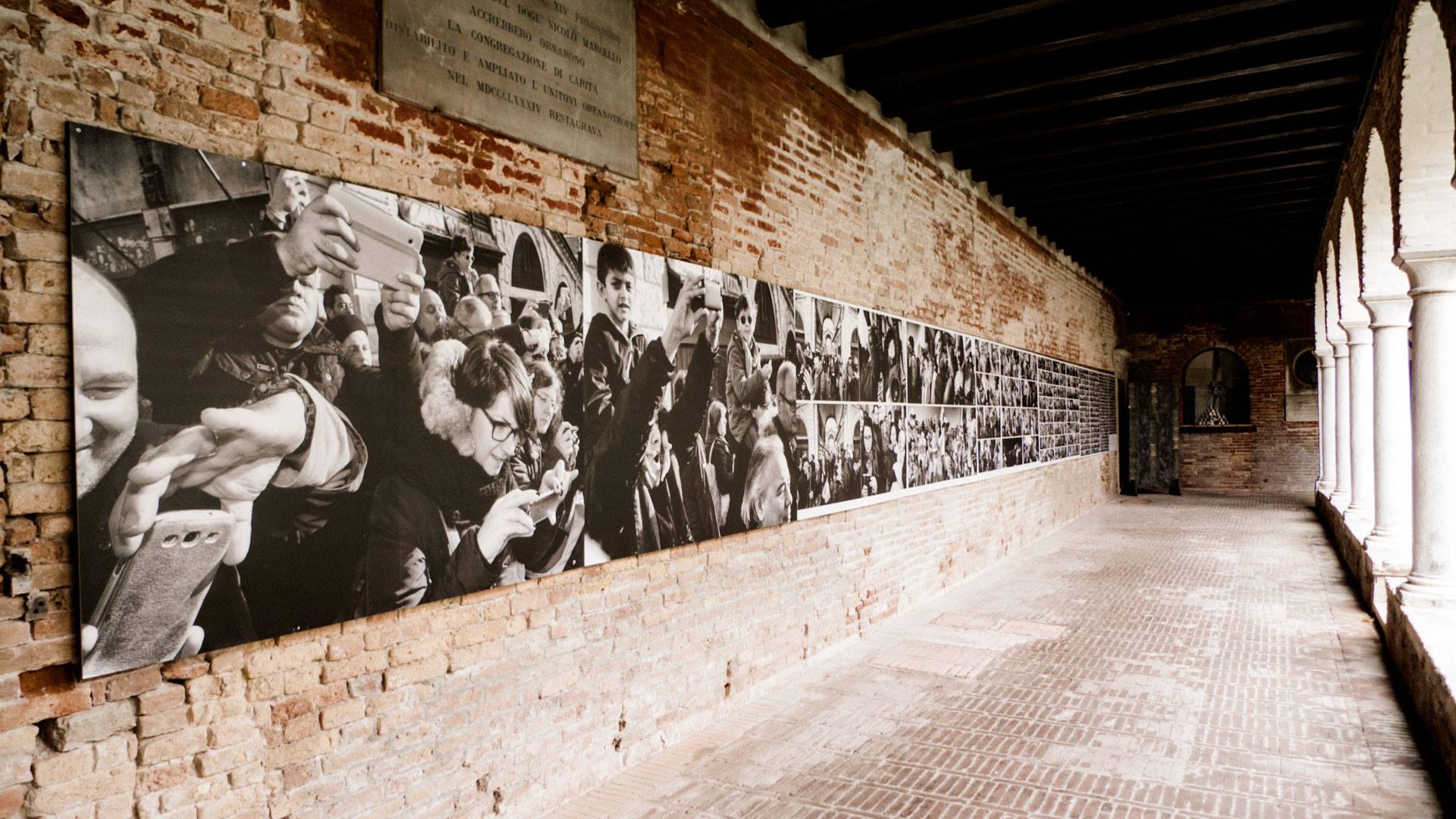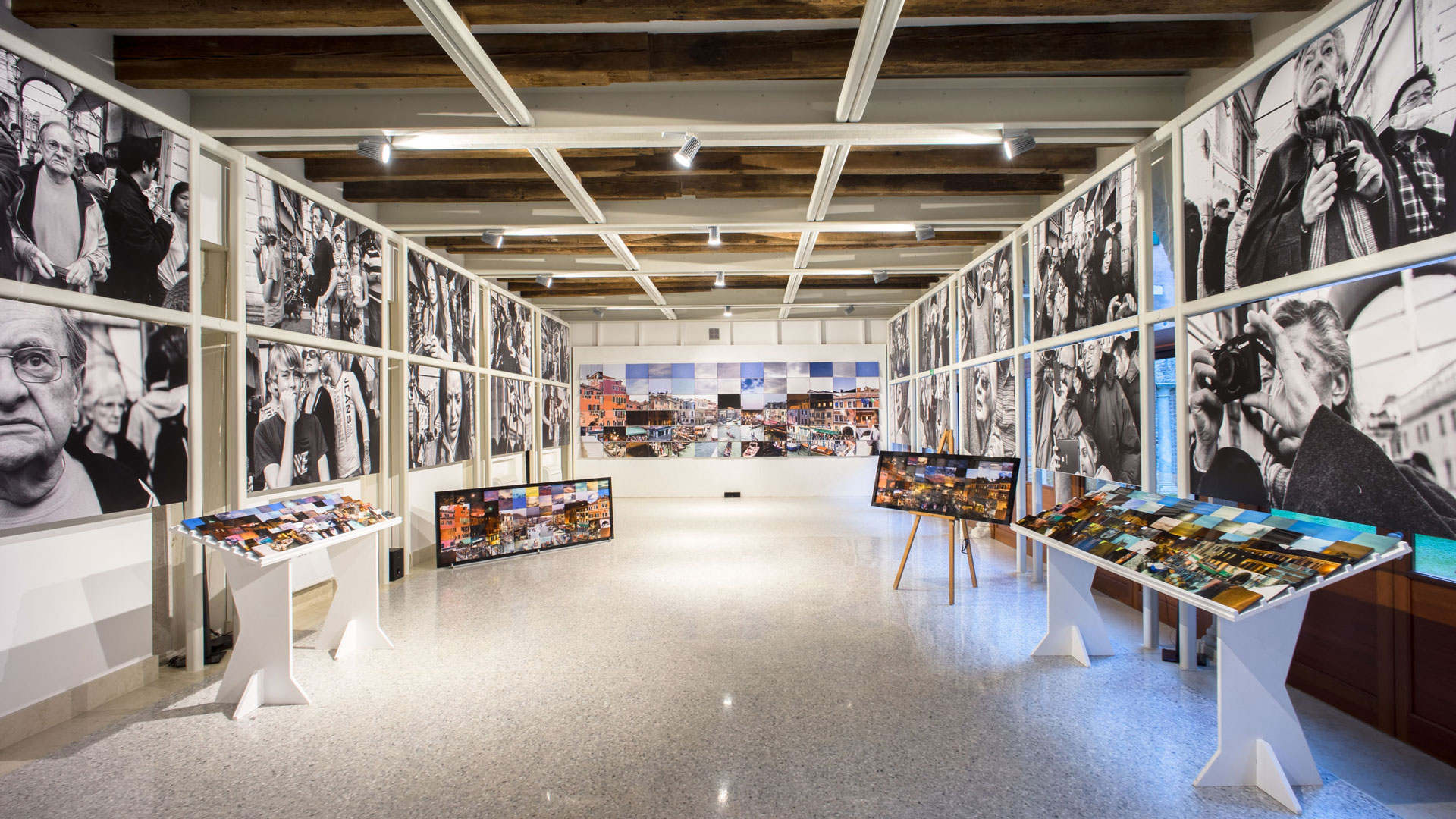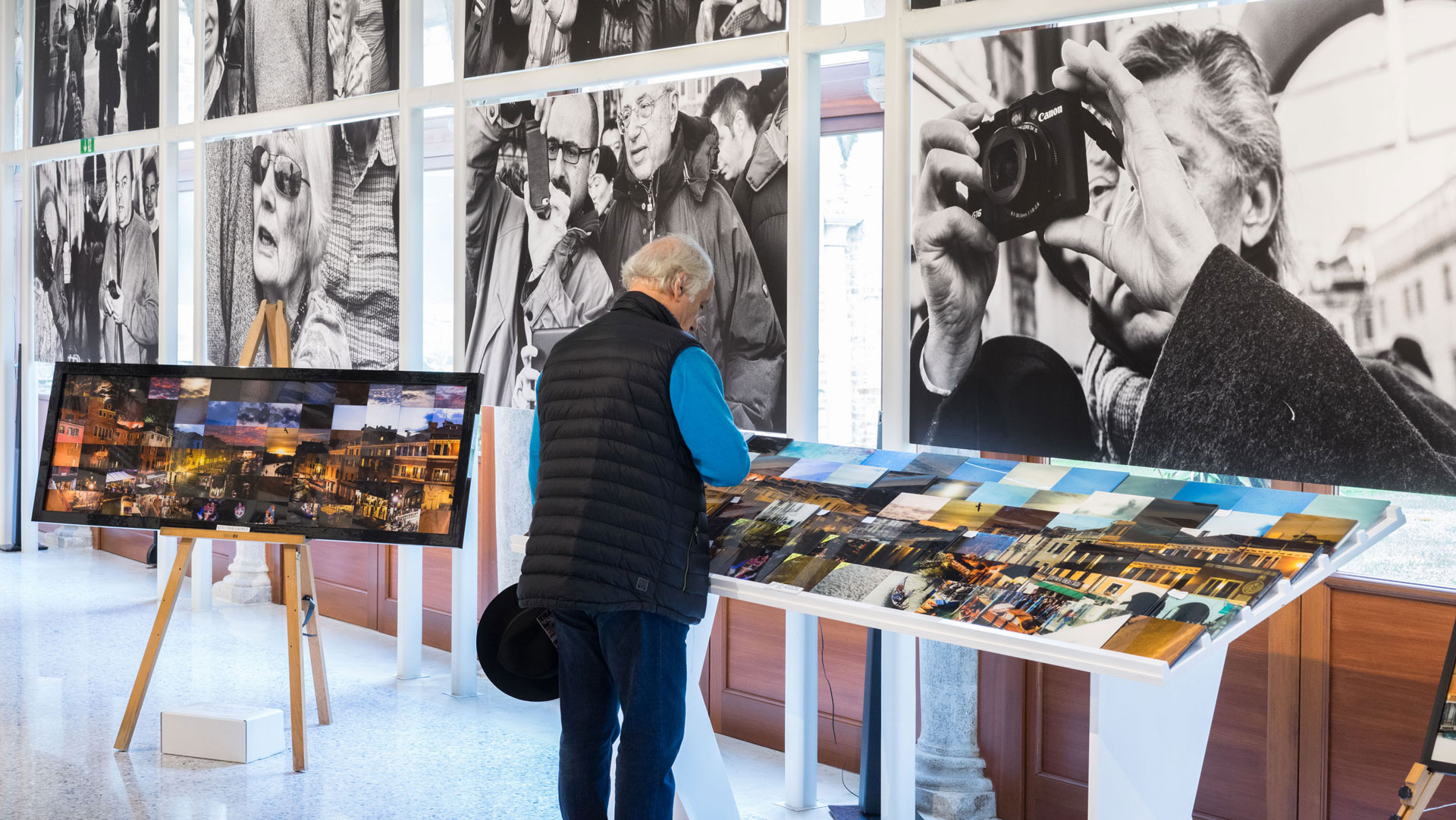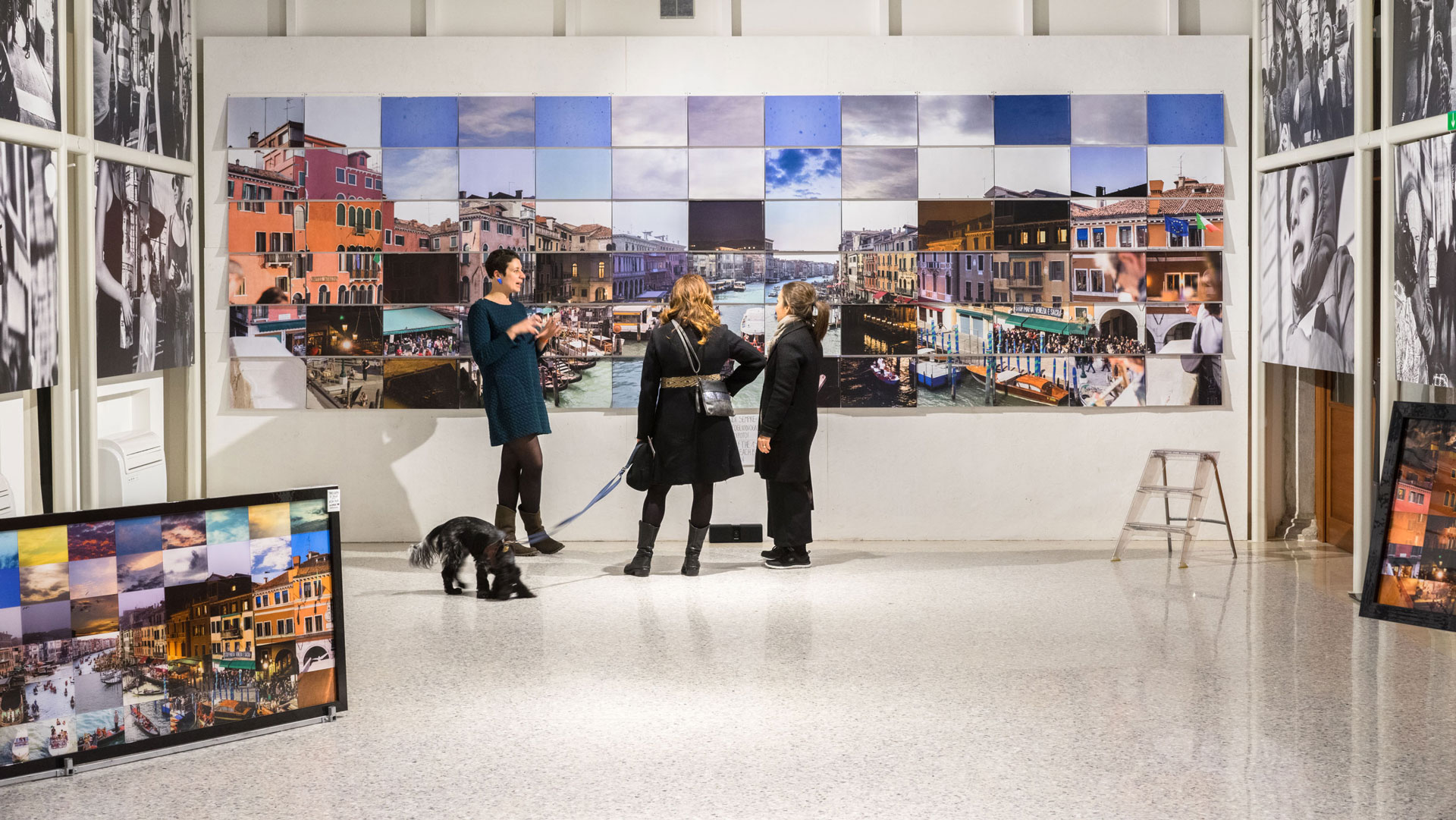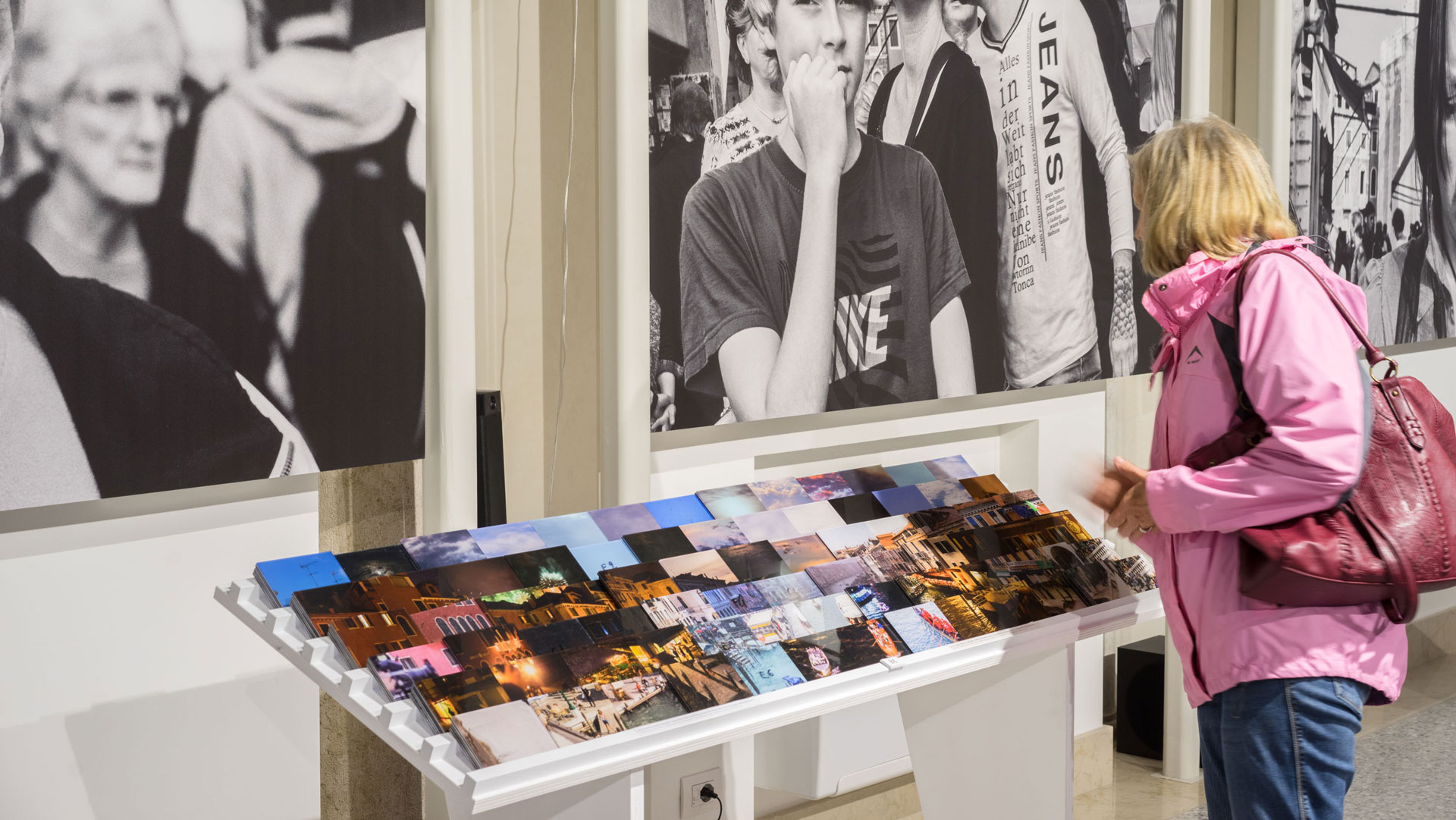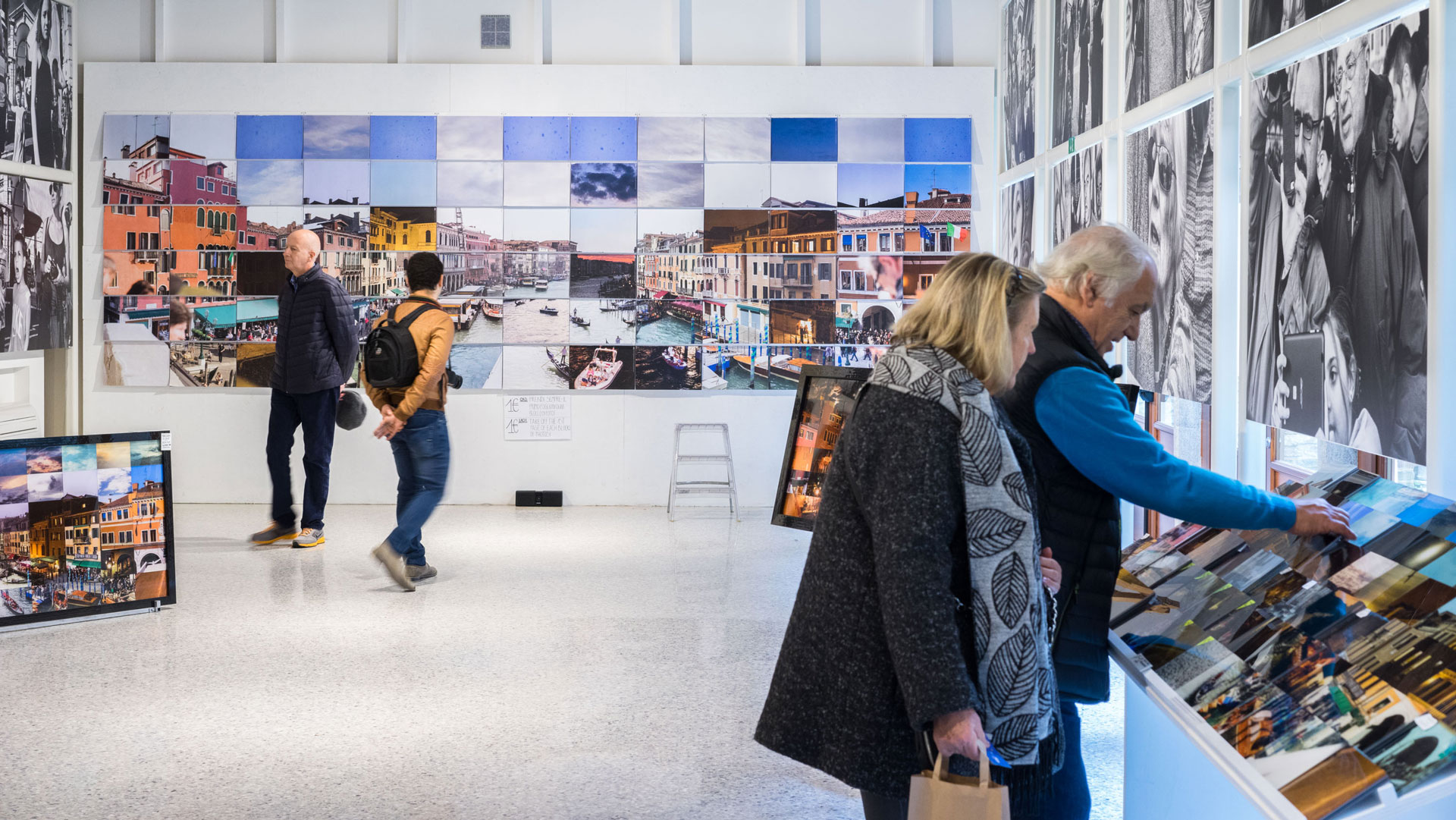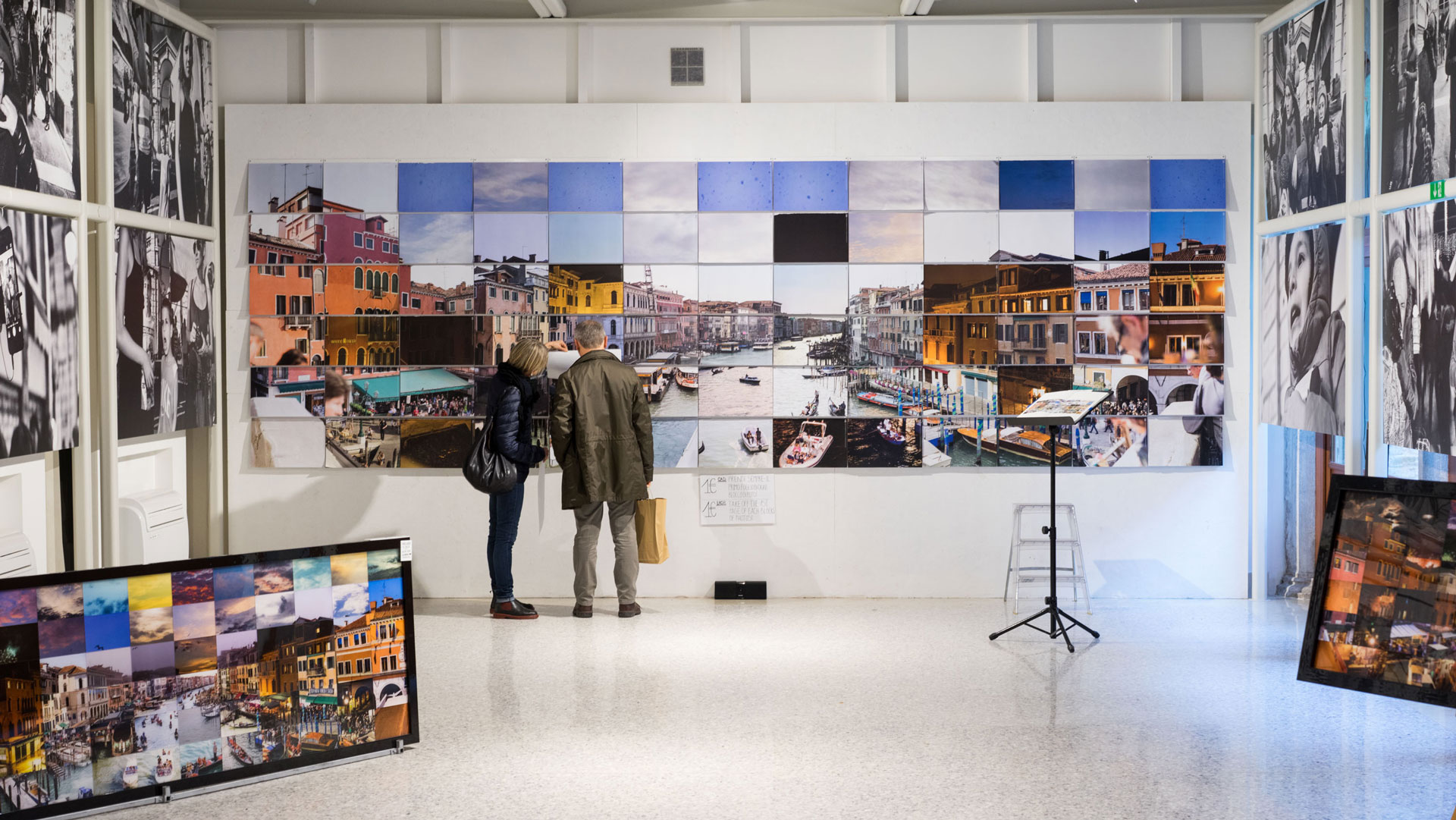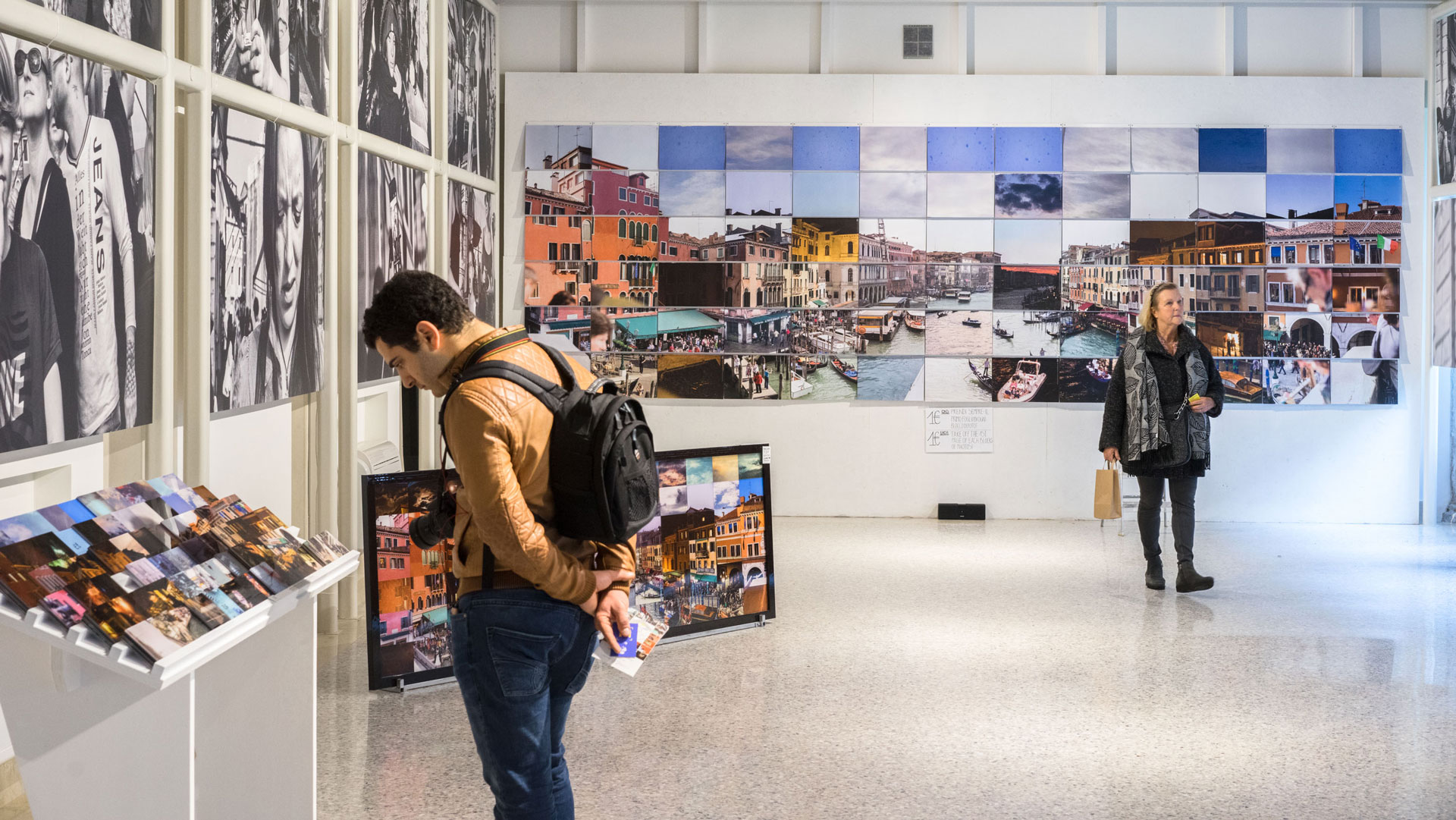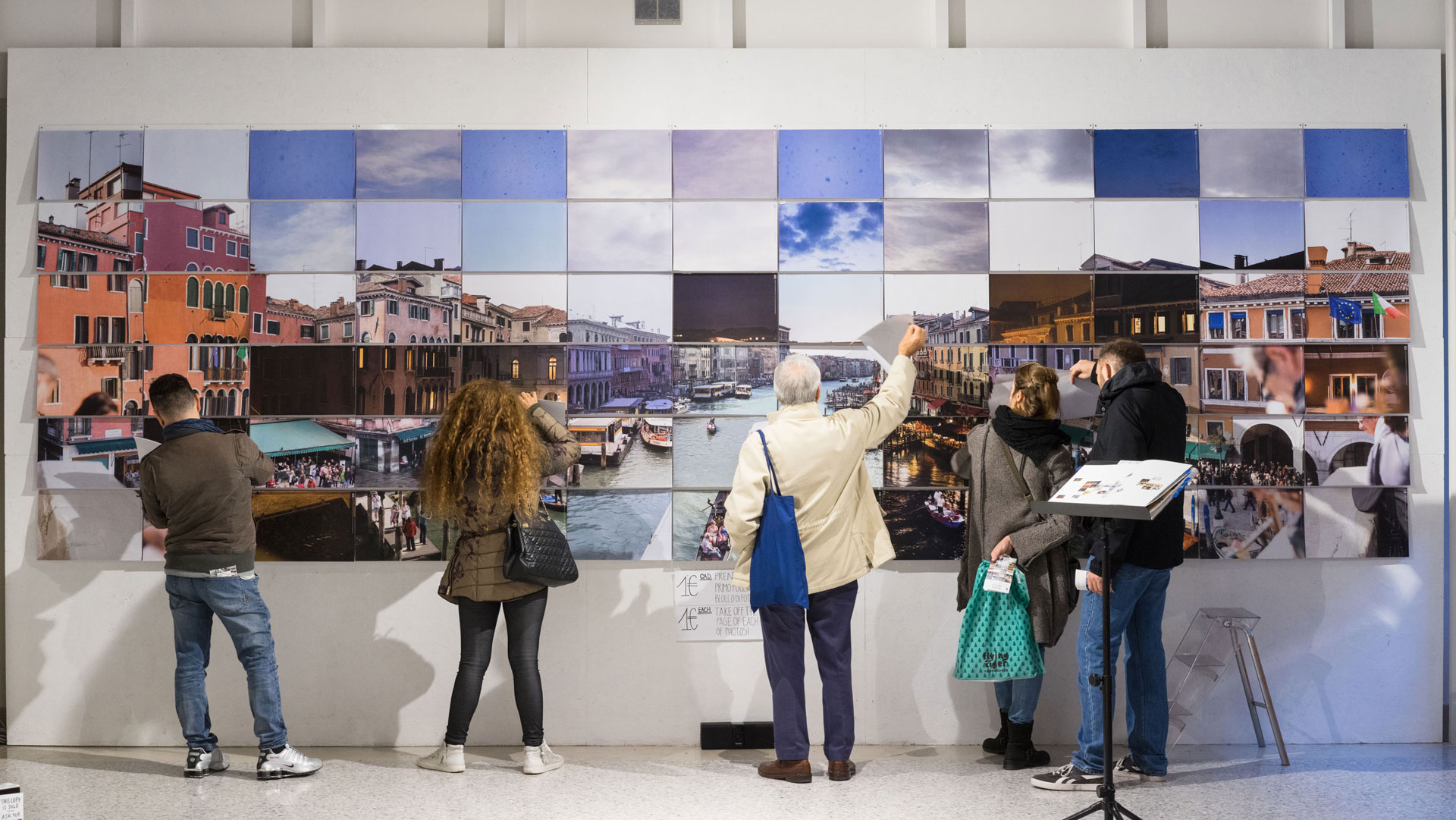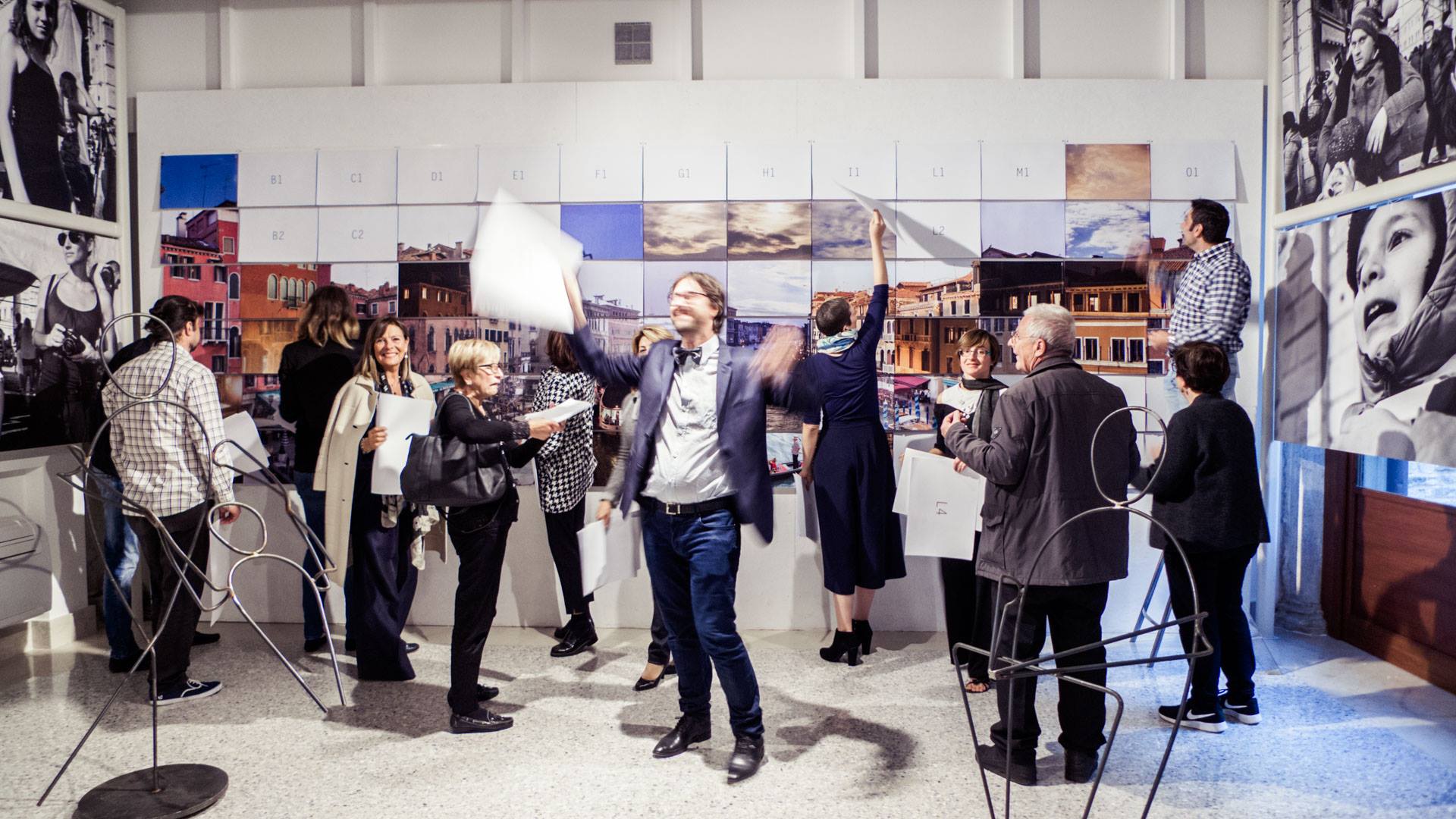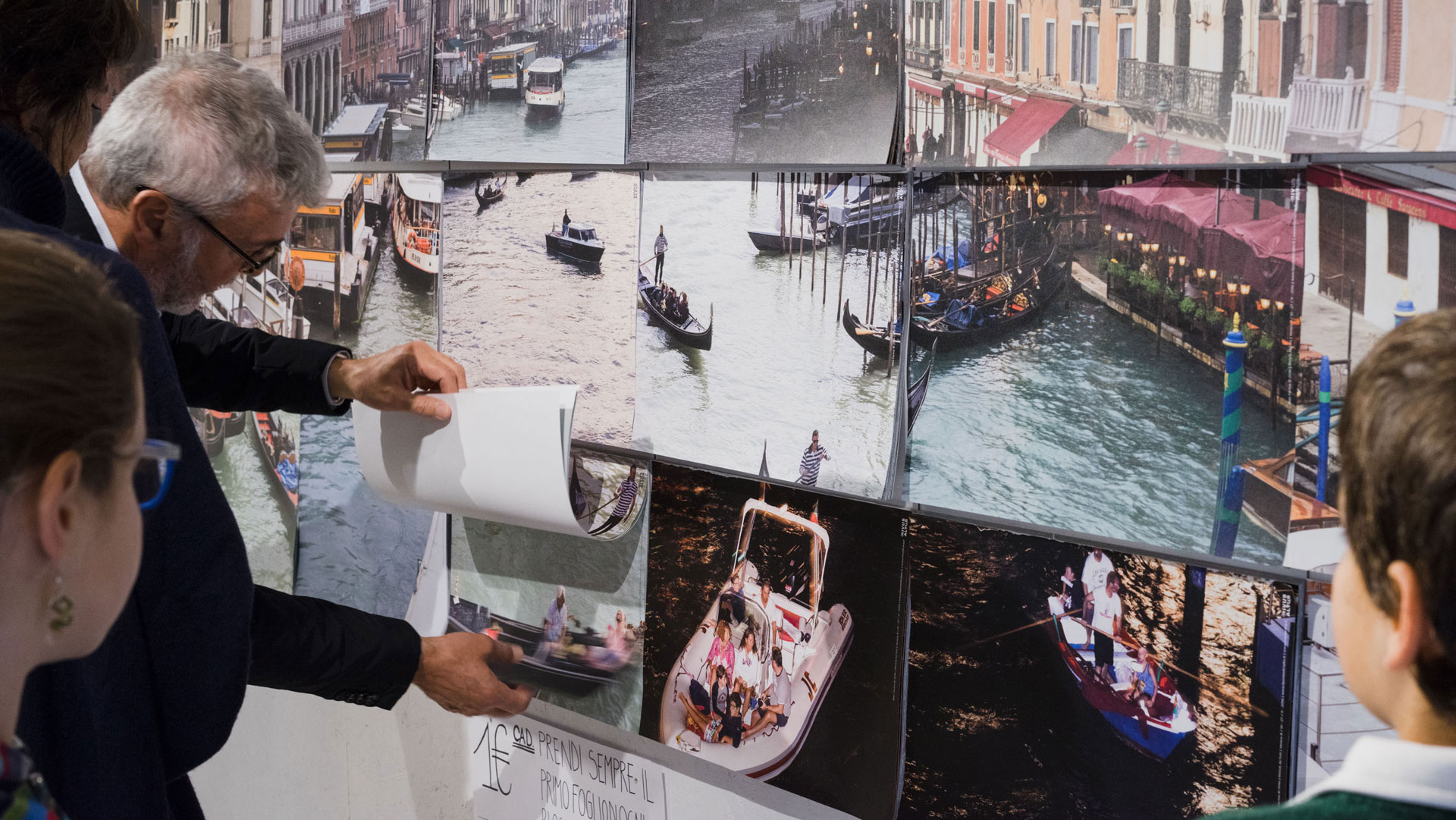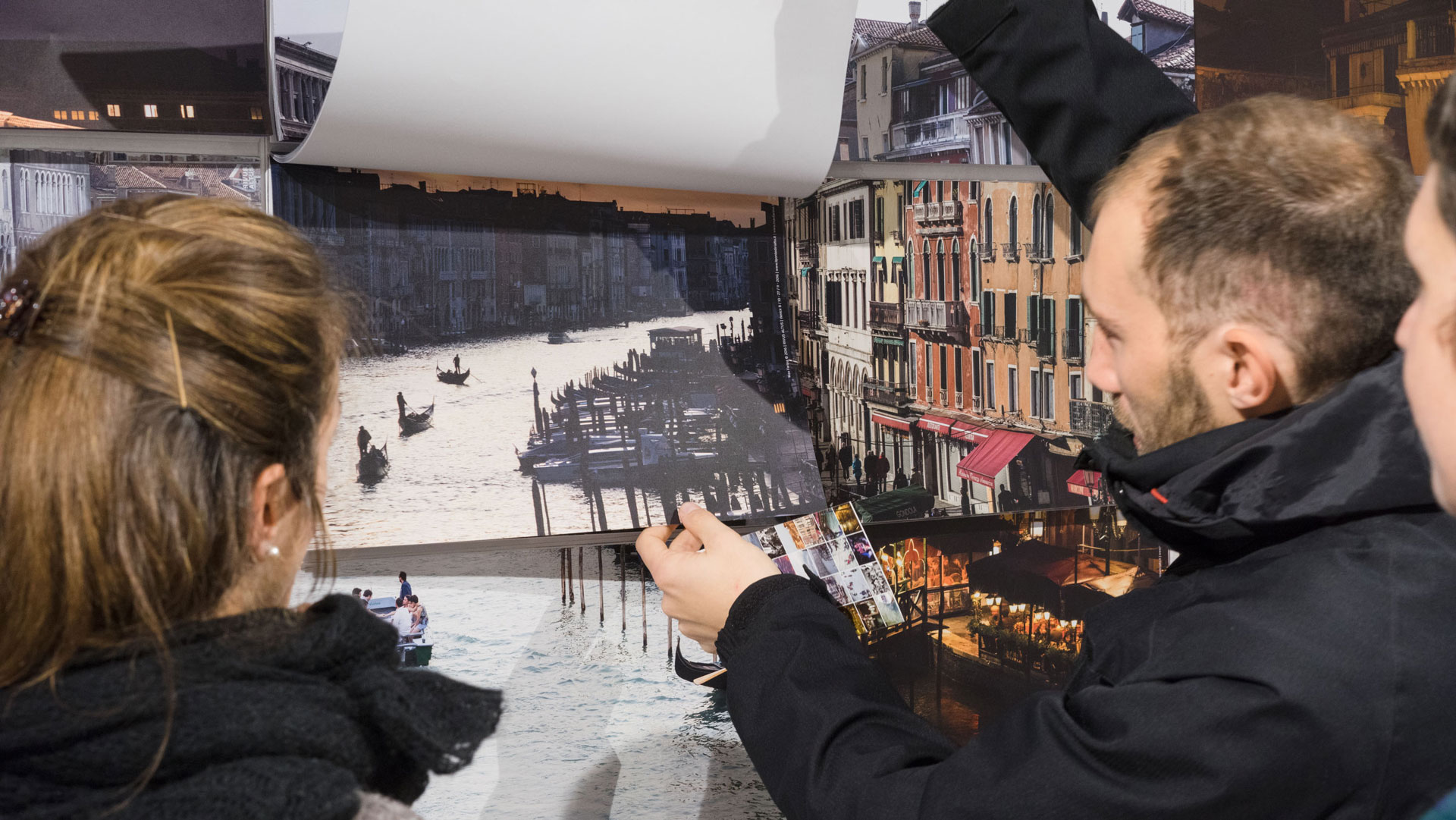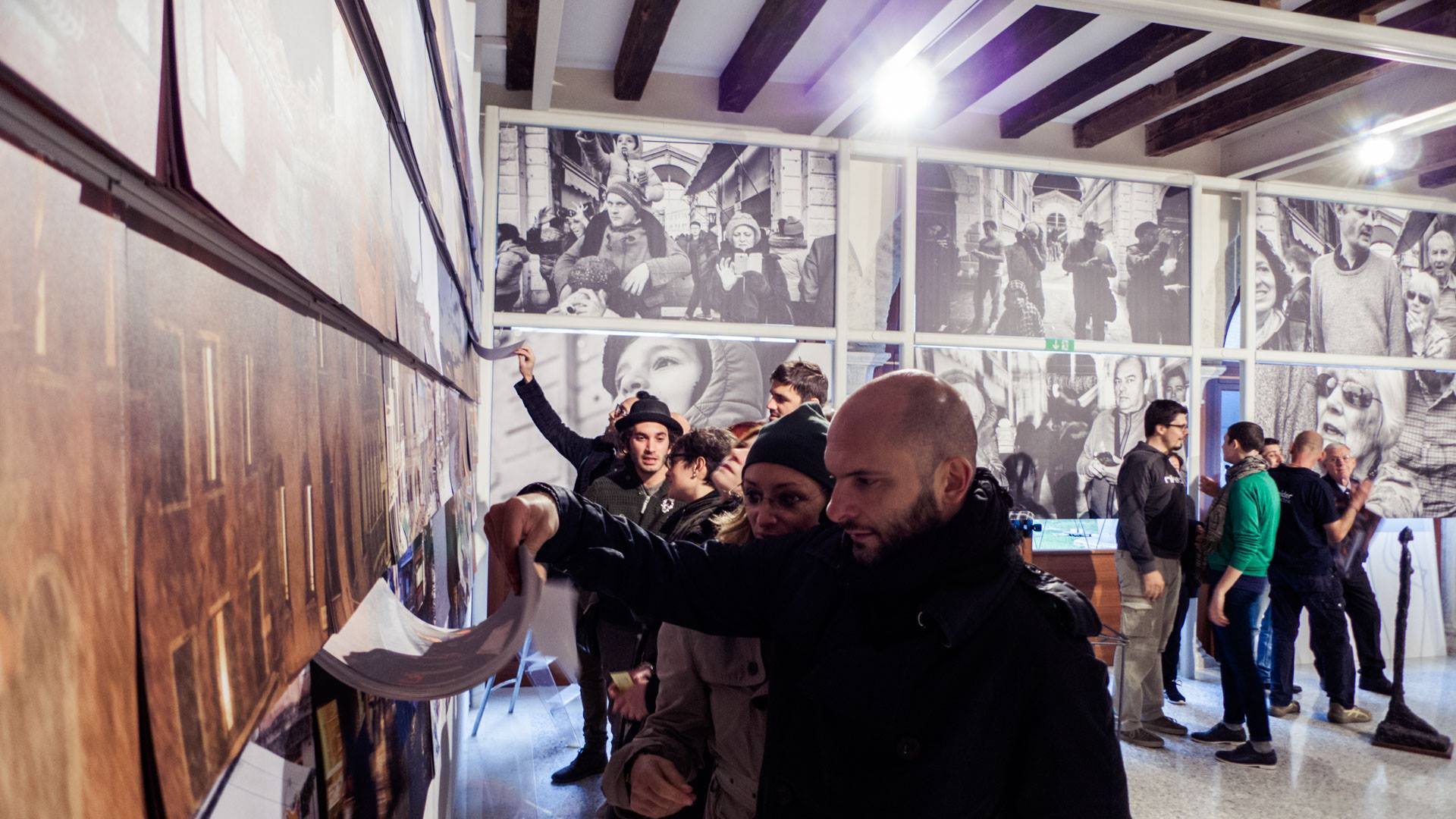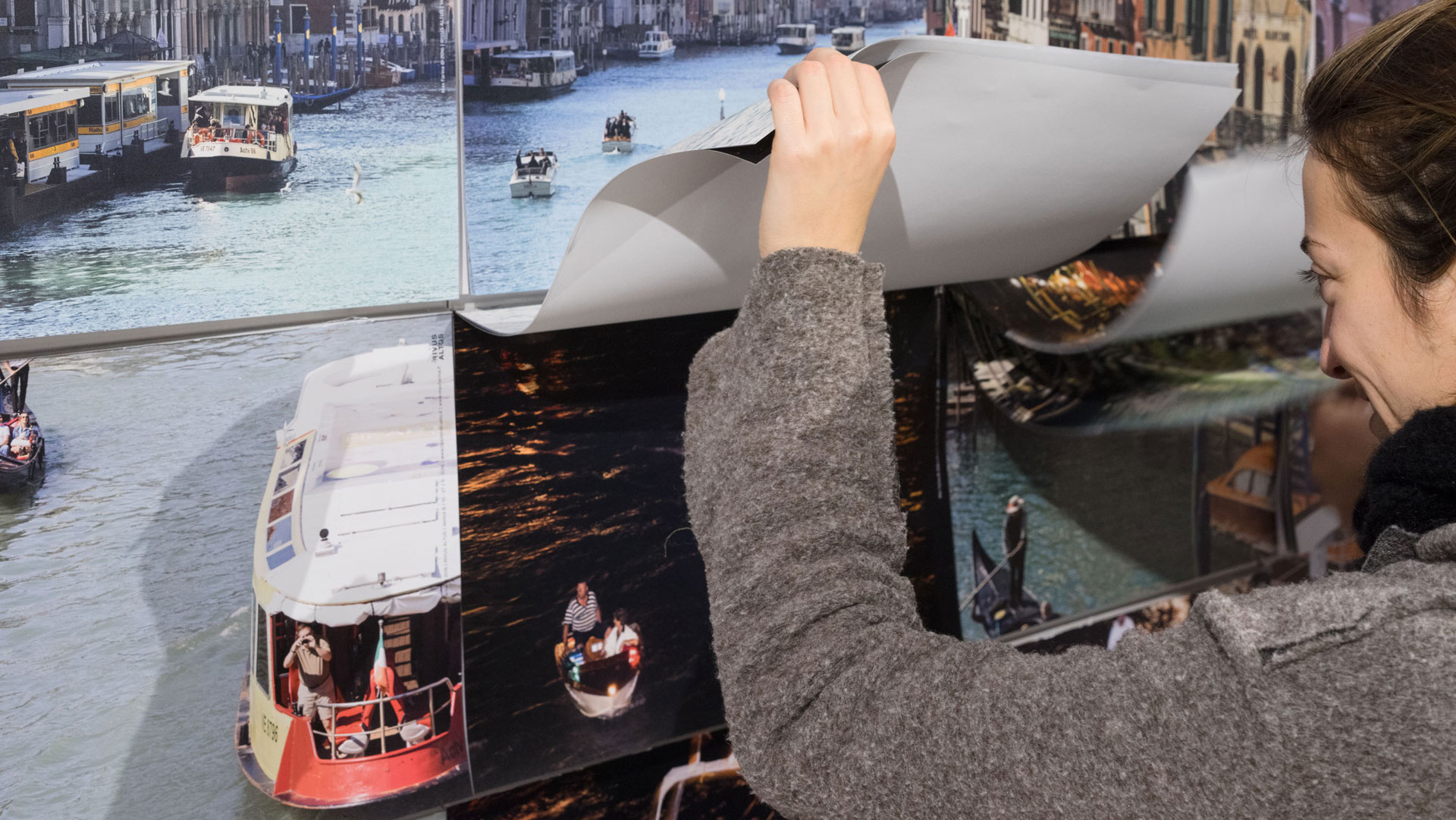RIVUS ALTUS – 10.000 visual fragments from the Rialto bridge, Venice
by Gigliola Foschi
He recorded with his camera every variation of light and everything that happened, staying still for 264 hours at the same place: the centre of the Rialto Bridge, the most crowded and photographed place in Venice, facing the Grand Canal. In two years, Massimiliano Farina has caught any change, focusing his attention on the single fragments that make up the landscape, as if looking through the eyes of flies and dragonflies. The result is not a single image, but a multiplicity of images. The visual perception depends on the variable and almost infinitely changeable editing, of every single piece that make up a perfect and unstable, fascinating and ever-changing landscape: both night and day, sunrise and sunset, yesterday and the day before yesterday … Similar to puzzles, his images do not capture one single moment, but they become a perspective drawn by the time going by. They don’t interpret anything in a subjective or expressive way, but enhance the camera and its “mechanical” look, like a magical recording tool. Farina uses photography to create images that you can only get thanks to the camera and to its technological unconscious. He “shatters the stereotype of Venice” and offers a kind of machine à voir which invites us to see the Grand Canal as through a magnifying glass, to scrutinize the slightest details made by light and darkness, waters and skies, buildings and boats, crowds and silence…
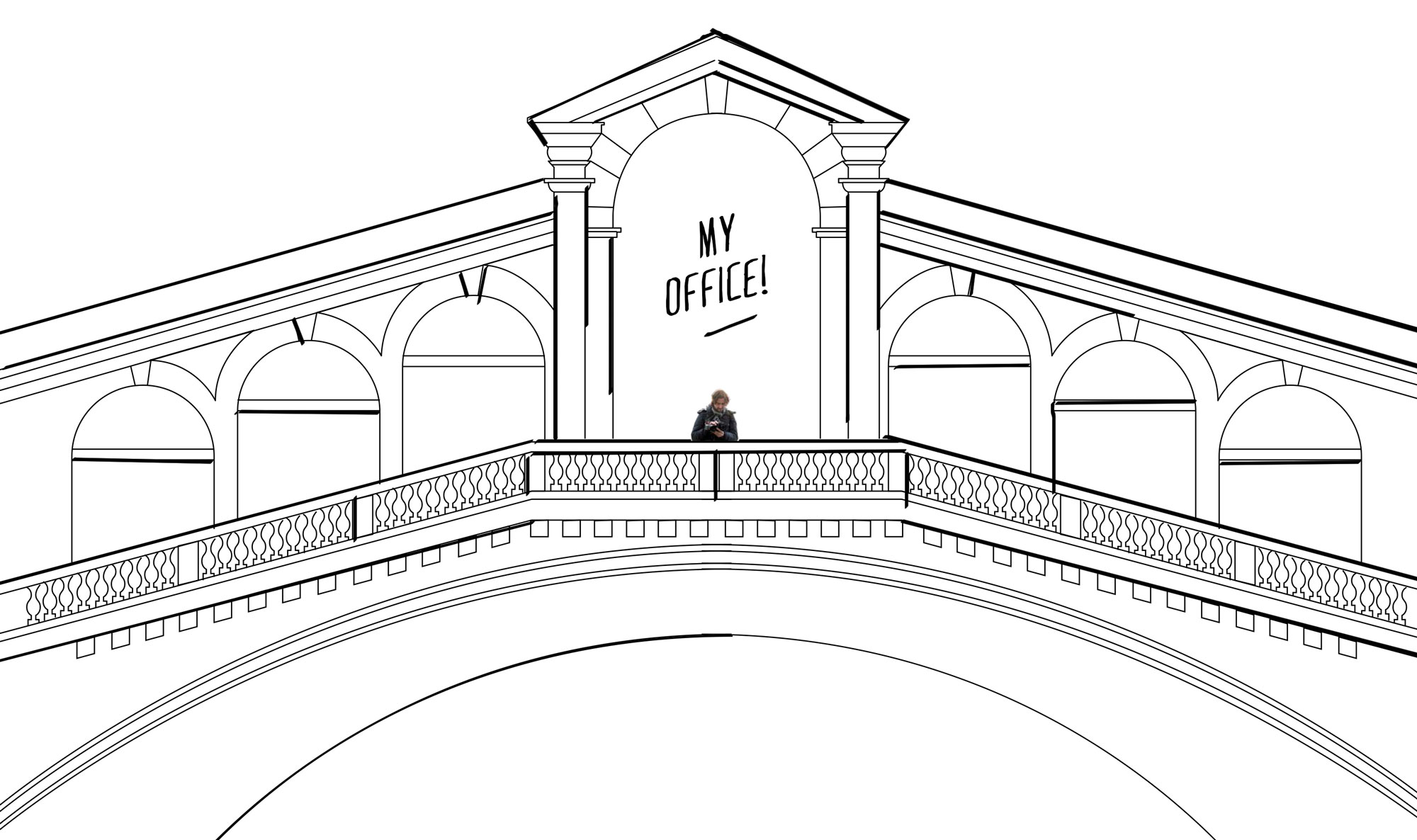
The Observers
Since visitors always stop on the Rialto Bridge to capture the breathtaking view, the best known in history, in all its facets, Max Farina observed events and people by blending in as a normal tourist. All these people are portrayed, described, narrated in more than 20,000 shots to document “what is happening, even when nothing happens, nothing but the flow of time or events”.
In order to depict the “Rialto people” Max Farina decided to apply a similar approach, splitting their viewpoint in two different frames. What they were experiencing had been captured as a quick sequence of actions, thanks to the almost simultaneous shutter click of two different cameras joined together whit a metal clamp.

7 meters photo wall / 78 blocks of photo paper / a colorful and always changing Panorama
Thanks to the interaction with the installation, all the visitors could take home one photo! The INTERACTIVE PERFORMANCE during the Exhibition in Venice was very appreciated!
With the patronage of the Municipality of Venice and the University Iuav and sponsored by The Boga Foundation / MLLO Architecture & Design

